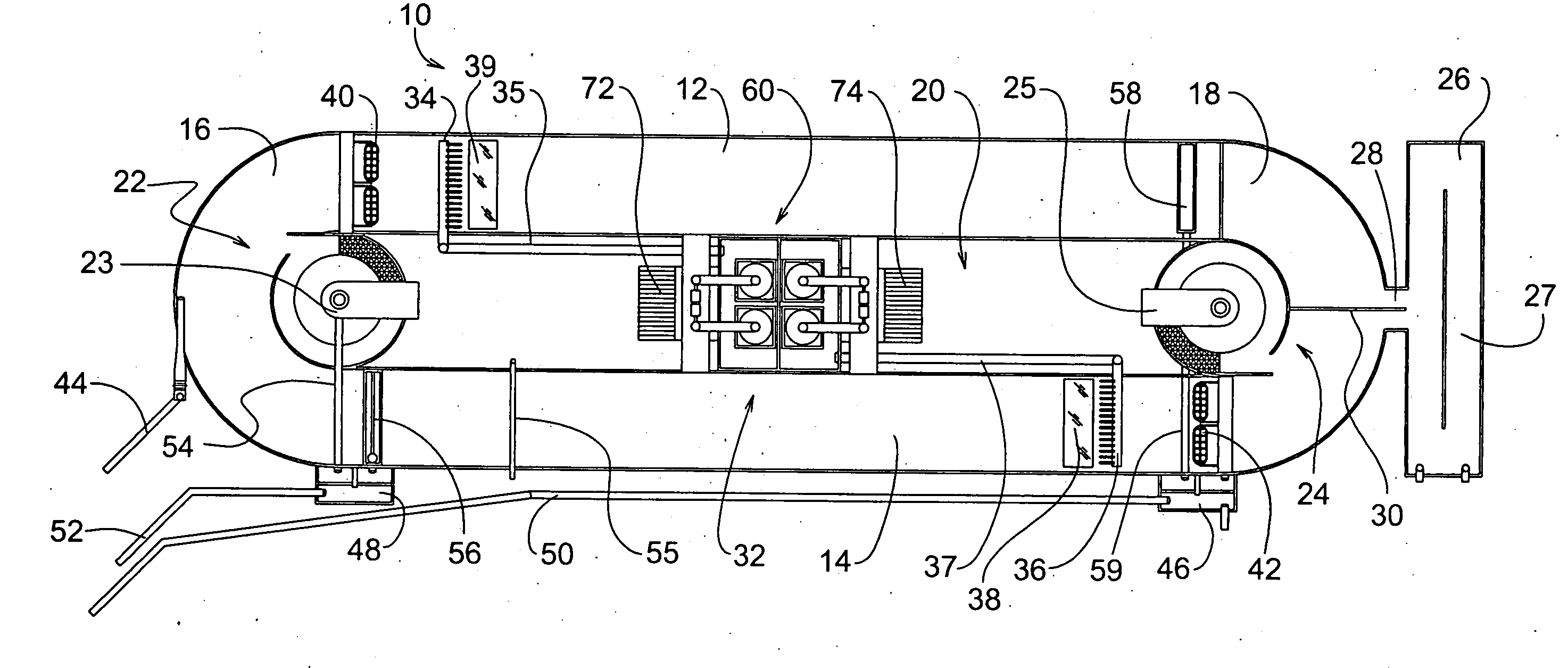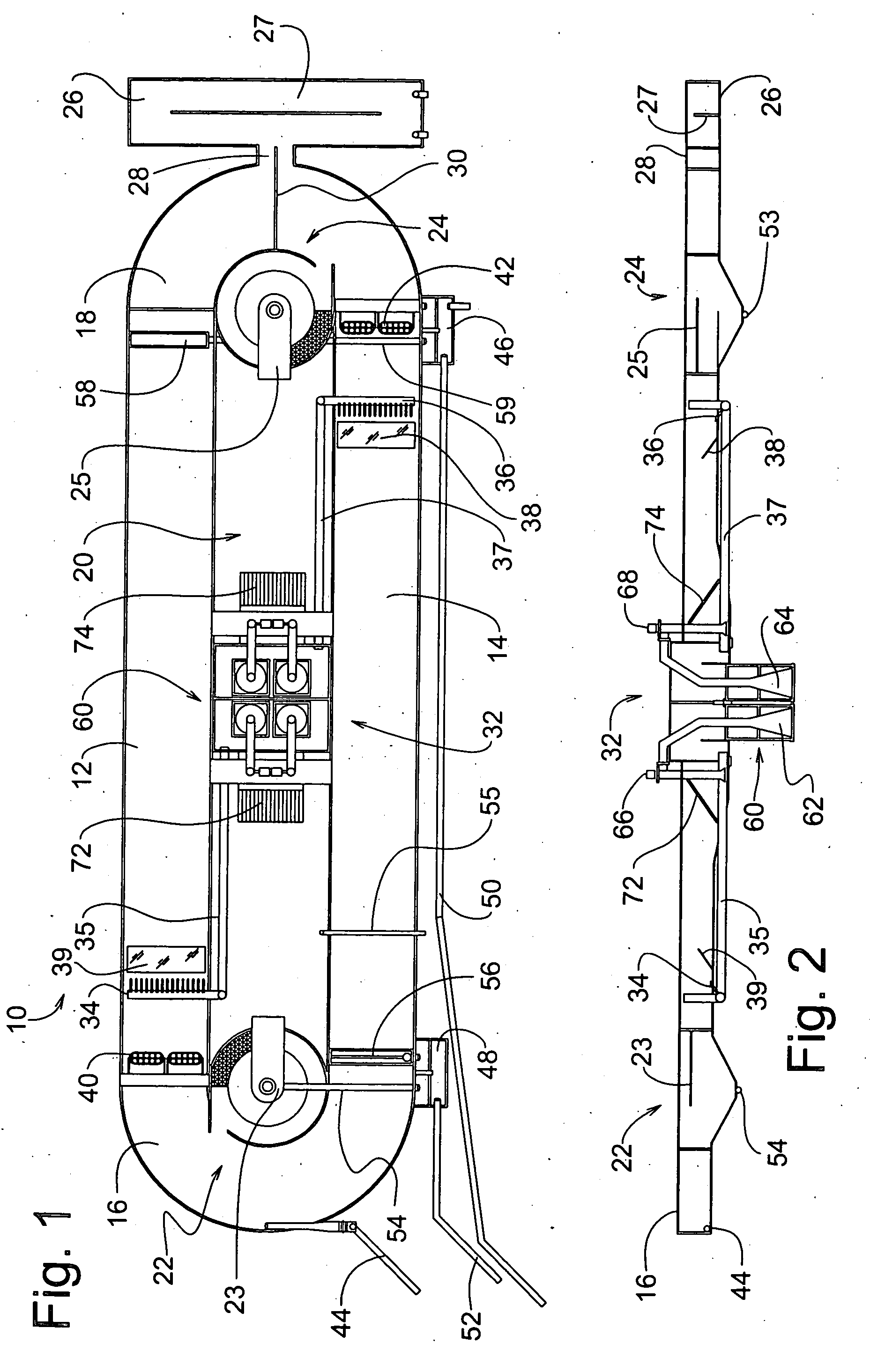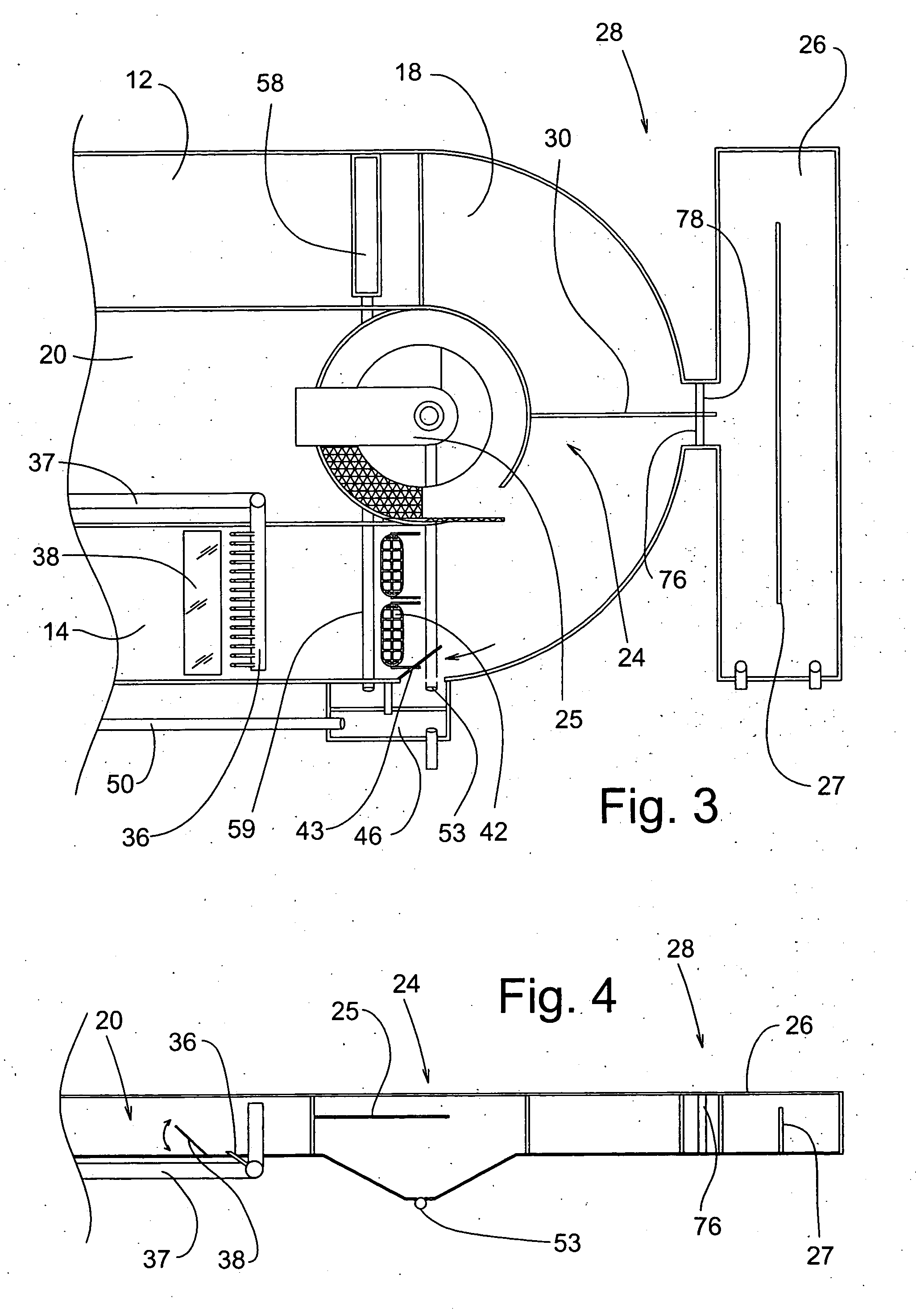More than 60% of our seafood supplies are now imported, resulting in a large annual trade deficit ($6.9 billion).
Often there are few or no environmental laws controlling their discharges which result in
environmental degradation and little or no overhead costs associated with complying with environmental laws.
These earthen ponds were scalable and required relatively small initial capital expenditures to construct, but required large land masses, were inefficient because of the ratio of square footage and consumptive gallons of water required per unit produced.
Additionally the growing conditions and
water quality in these ponds was difficult to monitor and control, harvesting was hit or miss, diseases were common and
solid waste products and
particulates were difficult to remove.
The process of decay also produces by-products such as
nitrogen compounds which adversely affect the
water quality within the tank.
The fish sorting required to maintain the
sizing restrictions often requires mechanical or physical handling and
relocation of the fish resulting in stress and trauma which can adversely affect the mortality, overall health and growth rate of the fish.
This method is often less than efficient and may result in additional stress and physical damage to the fish during harvesting.
Each species of fish prefers a particular rate of speed of water resulting in a sizeable percentage of the tank having a flow rate that will not be suitable for optimal
fish habitat.
The
current technology is very expensive to build and maintain, and becomes even more labor intensive and costly as the number of tank units increase.
Round tanks are not readily scalable to larger systems because of the inherent problems in flow rate differentials and water mixing (as discussed below).
This has become a significant problem in constructing economically efficient large fish farms.
The extreme number of round tanks required for large-scale fish production is counter-productive as they result in increased
operational costs and no construction savings, on a cost-per-pound of fish produced basis.
As effective as round tanks can be for small niche aquatic businesses or research systems, they do not offer the economy-of-scale opportunities necessary in the competitive environment of large-scale commercial aquaculture.
While this novel invention provides for means of removal of many of the gross
particulates from the water by means of a
trapping section at the bottom of the tank, it does not address the major problem of removal of dead and dying fish on a continuing basis.
Disinfection of a small portion of the water without prompt removal of the source of infection would not prevent the spread of the infection throughout the fish
population due to physical contact with the decaying matter.
This system does not provide for means of particulate removal or removal of dead or dying fish.
There is no means of providing for
sizing of fish and, additionally, there is no provision for a harvesting channel.
However, as seen previously, there is no provision for removal of dead and dying fish which represents one of the most important potential reservoirs of
disease within an aquaculture environment.
Increasing the
diameter of these small round tanks reveals inherent design restrictions that prevent efficient usage of the entire interior of the tank for rearing fish due to the centrifugal current differential within the confines of the circular space.
Since increased tank
diameter exacerbates the differential in
water velocity within the tank, these large round tanks become inefficient in terms of space utilization.
Additionally, the ability to scale them to a larger size would not be cost effective.
Moreover, the space between the numerous tanks is essentially wasted space with respect to fish rearing operations.
A method of culturing fish in a plurality of tanks with each tank comprising a relatively independent growing environment would require enormous capital and labor expenditures per fish produced.
Physically sorting and moving the fish from tank to tank would result in a great deal of trauma and possibly injury to the fish.
There is no means provided for removal of heavy particulates, dead or dying fish or providing for circulation of water through the tank.
The fact that these multiple habitats are individually removable suggests that the size of the baskets are relatively small and that the number of units of fish per basket is severely limited.
This ratio of capital expenditure (and labor costs) per unit produced is extremely high.
Additionally, the trauma involved in
physical separation of the fish by size into each basket would be very high.
Additionally, there is no means provided for removal of dead or dying fish on a continuous basis, so the likelihood of spread of
disease from the presence of dead or dying fish would seem to be overwhelming.
 Login to View More
Login to View More  Login to View More
Login to View More 


